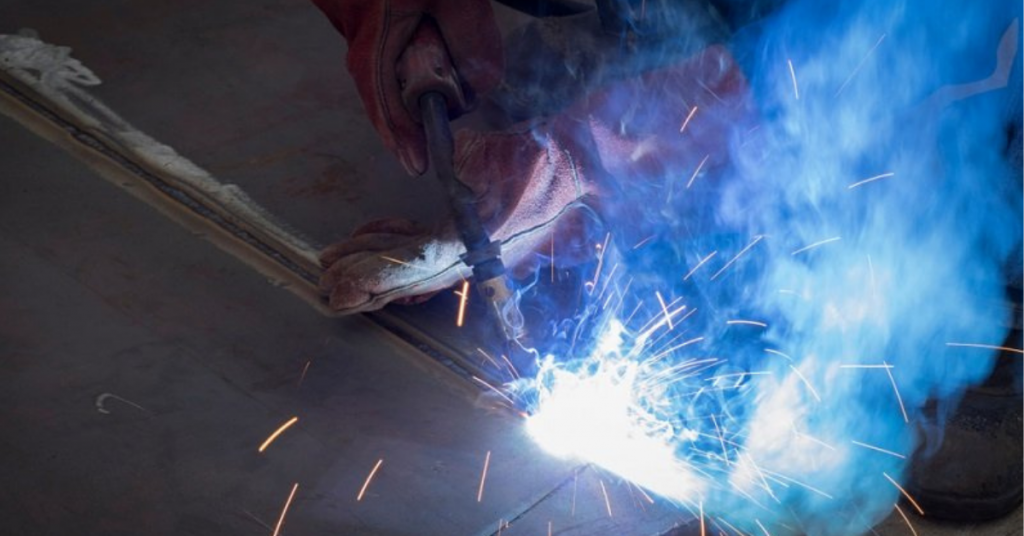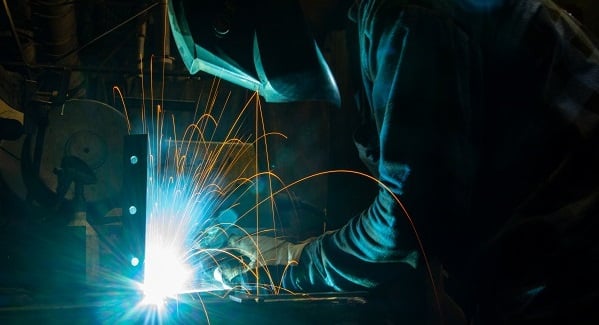Introduction: What is MIG Welding and Why Do We Need Gases?
MIG welding is a popular technique used by metal fabricators and welders. It uses an electric arc to heat the metal and join two pieces of metal together. To ensure that the weld is strong and free from defects, a shielding gas is used to protect the molten metal from oxidation. The most common gases used for MIG welding are argon, carbon dioxide, oxygen and helium. These gases provide an inert atmosphere around the weld joint which helps to reduce porosity, spatter and warping of the welded material. Additionally, these gases also help to improve arc stability and penetration which leads to better quality welds.

Types of Gases Used in MIG Welding.
MIG welding is a type of welding process that uses an inert gas to create strong and durable welds. The inert gas used can vary depending on the type of material being welded. Some of the most common types are argon, carbon dioxide, oxygen, helium and nitrogen. Each gas has its own unique properties that make it suitable for certain applications. For example, argon is widely used due to it being readily available and inexpensive. It also has the lowest thermal conductivity, thus helping to keep heat in the weld area.
The Difference Between Argon & Carbon Dioxide.
Argon and Carbon Dioxide (CO2) are two of the most commonly used gases for MIG welding. While each gas has its own unique characteristics, it is important to understand the differences between them in order to choose the right one for your project. Argon is a noble gas that is non-reactive, making it ideal for welding aluminium and stainless steel. On the other hand, CO2 is a reactive gas that can be used for welding steel and other metals with more ease than argon. Both gases have their advantages and disadvantages when it comes to MIG welding, so understanding their differences will help you make an informed decision when selecting which one to use. Click here for a more in-depth look at these two MIG welding gases.
Selecting the Right Gas Mix for Your Project.
Selecting the right gas mix for your welding project is essential to ensure that you have the best results. The shielding gas mixture ratio determines the weld’s strength, penetration, and other characteristics. It is important to choose a gas mix that is compatible with the base metal and filler material that you are using. Additionally, it should be suitable for the type of welding process you are using and provide adequate shielding to protect your weld from contamination. To help you understand how to choose a shielding gas mixture ratio that will give you the best results, use the below pointers to get started.
- For aluminium MIG welding, inert pure argon is recommended
- Helium is the other inert gas, producing a very hot weld with mild penetration characteristics.
- Carbon dioxide is ideal for MIG welding mild steel, providing deep penetration.
- For welding stainless steel, an argon/carbon dioxide mixture is preferable.
For advice on which gases are best for your project based on wire specifications, see guidelines from the wire manufacturer.
How to Set Up Your Gas Flow Regulator & Connect it to Your Machine.
Setting up a gas flow regulator is an important step when connecting your machine to a gas supply. A flow meter regulator will ensure that the correct amount of gas is fed into your machine, and it also helps to prevent any accidents or malfunctions. MIG gas flow rates are very low compared with other types of welding, typically between 3 to 8 psi. When setting up and connecting the regulator to your MIG welder, it’s important to ensure all connections and seals aren’t leaking. Ensure the pressure is around 25 to 30 cubic foot-hours, however if you’re working outside, this well need to be at the higher end of that scale.


comments
Pingback: Everything You Need to Know About Gases for MIG Welding. – Ride-gear-up.com
Pingback: Everything You Need to Know About Gases for MIG Welding. – Tracktodirt.com
Pingback: Everything You Need to Know About Gases for MIG Welding. – Mynewcaraccessories.com
Pingback: Everything You Need to Know About Gases for MIG Welding. – Dubegarages.com